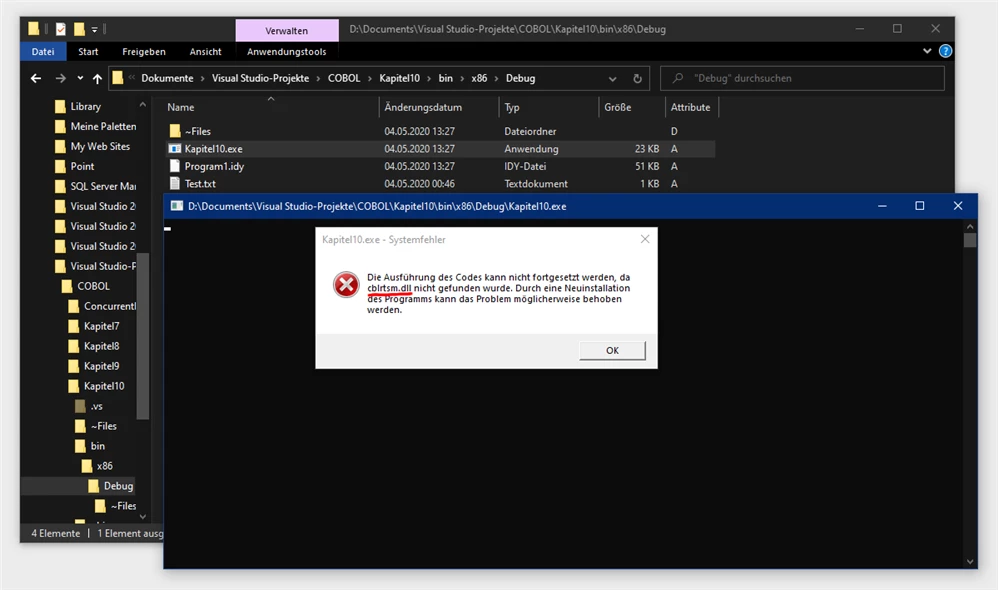Creating a COBOL console application solution I don't seem to be able to run the compiled EXE file by double-clicking it.
I get a system error message telling me that "cblrtsm.dll" is missing:

I can debug the file without flaw from within the IDE.
Am I missing something? How can I start the EXE file from the Windows shell?
I read through the documentation at Building COBOL Applications and Running Applications (Native COBOL), but the information there couldn't shed any light on my problem. The only issue I found in the forums so far didn't yield a result, too.





